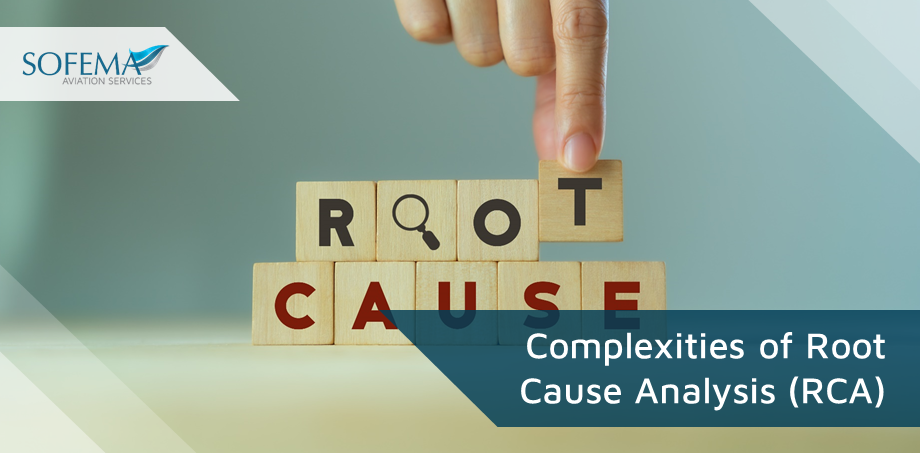Sofema Aviation Services (SAS) www.sassofia.com considers the complexities of Root Cause Analysis (RCA)
To be effective in reducing negative events we need to understand how we can use various analytical techniques to first understand and then to mitigate the actual as well as potential exposure.
The root cause analysis (RCA) method uses a cause and effect approach by asking (For example) multiple “why” questions as an effective way to identify one or more low-level elements which contributed in some way to a subsequent failure.
With sufficient information available we are able to develop a number of corrective actions which should directly impact the exposure and which if taken correctly should prevent failure in the future.
Direct cause is defined as “the cause that directly resulted in the occurrence.” This would be like the person who whilst following a standard operating procedure (SOP) makes an “error” which results in an adverse outcome.
So therefore we can say that the person’s error is the direct cause of the problem that occurred.
What is a Cause?
When we consider RCA, we understand the term “CAUSE” as a condition that produces an effect; moreover eliminating a cause(s) will eliminate the effect.
Note – The cause(s) at the lowest level is frequently termed the root cause(s).
Caution Related to Overfocus of the Direct Cause
Identifying the “culprit” of the Direct Cause is typically the point at which most companies stop and simply retrain the person! (often using the same training program, and without looking any further into possible causes.
This approach leads to a “blame culture” in many companies, rather than the culture of quality and continuous improvement of processes that we should be aiming for.
Consequences of Treating a Direct Cause as the Root Cause
When an organization confuses a direct cause for a root cause the root cause is not identified.
As a result, the focus may be on Corrective Actions prescribed for issues other than the root cause, Addressing only contributing causes will not solve the root cause (essentially the underlying issue that led to the problem in the first place.)
The root cause of the problem possibly remains in place and may very well cause further problems in the future.
What is a Contributing Factor
Within RCA we define the term “contribute” as helping to bring about a result; exacerbating something; acting as a factor or condition that influences the effect by increasing its likelihood, accelerating the effect in time, affecting the severity of the consequences,
Testing Contributing Factors
Eliminating a contributing factor(s) won’t eliminate the effect.
Caution Concerning Contributing Factors
As a general comment, it is not uncommon for people to identify conditions that have had an influence on the failure event as contributors when in actuality they should be understood as causes.
Next Steps
Follow this link to our Library to find & Download related documents for Free.
Sofema Aviation Services Currently offers more than 300 EASA Regulatory Compliant and Vocational Training Courses please see www.sassofia.com or email office@sassofia.com
Tags:
Aviation Quality, Root Cause Analysis, Aviation Safety Auditing




